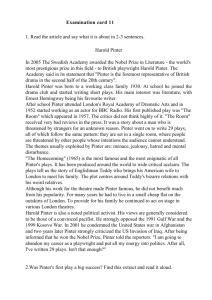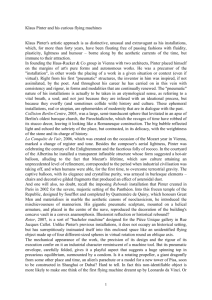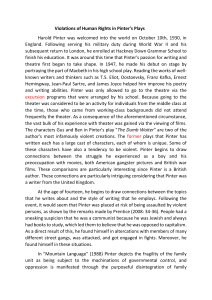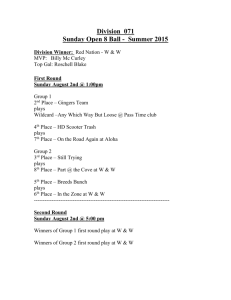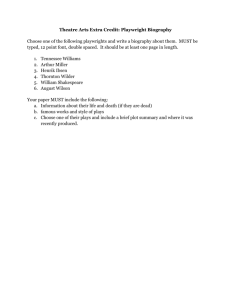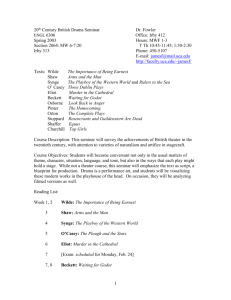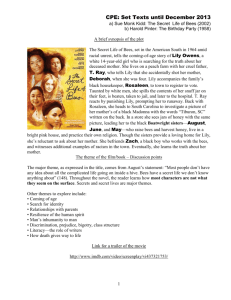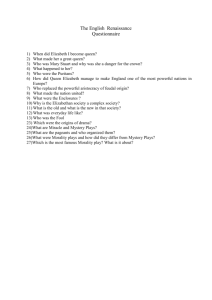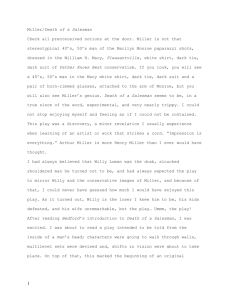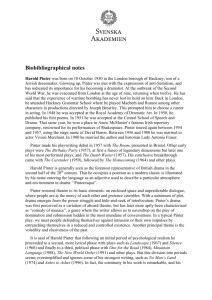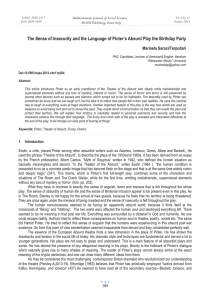evolution of harold pinter
advertisement
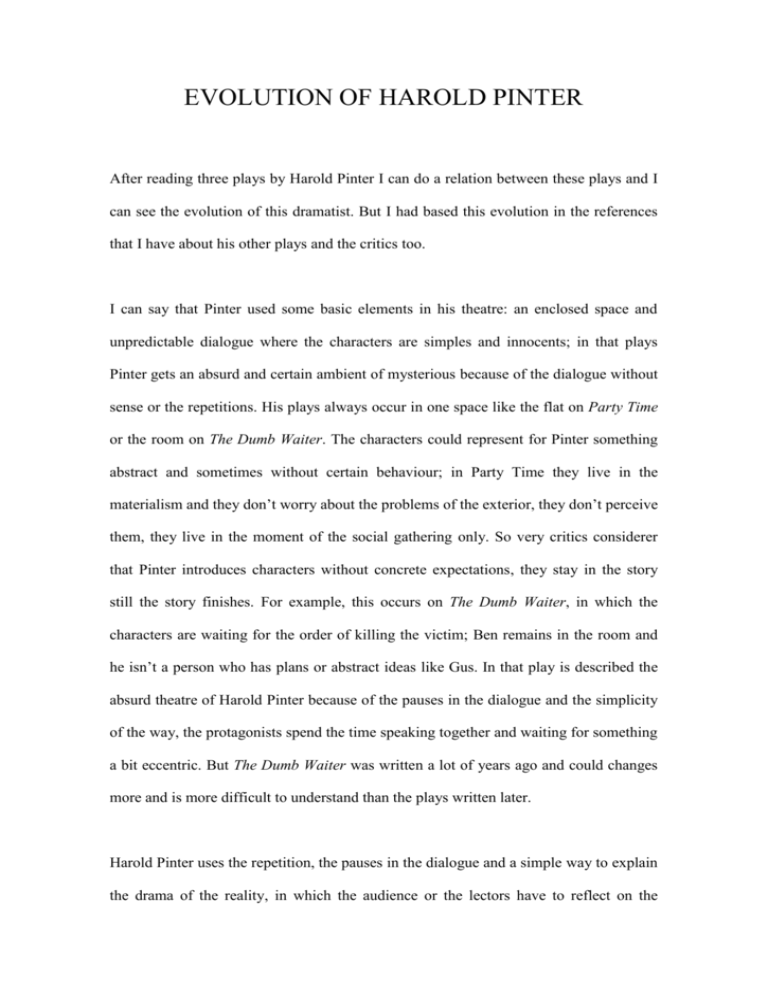
EVOLUTION OF HAROLD PINTER After reading three plays by Harold Pinter I can do a relation between these plays and I can see the evolution of this dramatist. But I had based this evolution in the references that I have about his other plays and the critics too. I can say that Pinter used some basic elements in his theatre: an enclosed space and unpredictable dialogue where the characters are simples and innocents; in that plays Pinter gets an absurd and certain ambient of mysterious because of the dialogue without sense or the repetitions. His plays always occur in one space like the flat on Party Time or the room on The Dumb Waiter. The characters could represent for Pinter something abstract and sometimes without certain behaviour; in Party Time they live in the materialism and they don’t worry about the problems of the exterior, they don’t perceive them, they live in the moment of the social gathering only. So very critics considerer that Pinter introduces characters without concrete expectations, they stay in the story still the story finishes. For example, this occurs on The Dumb Waiter, in which the characters are waiting for the order of killing the victim; Ben remains in the room and he isn’t a person who has plans or abstract ideas like Gus. In that play is described the absurd theatre of Harold Pinter because of the pauses in the dialogue and the simplicity of the way, the protagonists spend the time speaking together and waiting for something a bit eccentric. But The Dumb Waiter was written a lot of years ago and could changes more and is more difficult to understand than the plays written later. Harold Pinter uses the repetition, the pauses in the dialogue and a simple way to explain the drama of the reality, in which the audience or the lectors have to reflect on the profound themes that are in the plays. Because in his plays there is a mystery behind the uncomplicated trama, and it’s hard to imagine. Reading the three plays, “The Dumb Waiter, Ashes to Ashes and Party Time”, it could be a better evolution because the first one was written early than the others. In these epoch (at 1957), Pinter was considered a representative writer of British drama. This aspect of his bibliography appears in that plays. In the play Ashes to Ashes, Harold Pinter presents the action whit objectivism and without conclusion, so the writer tries that the lector makes his own conclusion about what he’s reading: Rebecca seems a normal woman who is living a normal live with some bad memories; she is with a man, Devil, who seems a simple person too. What can we think about the development of this trama? The same occurs in Party Time, with the role of Jimmy, who doesn’t appears during the story but is named by the other characters making a lot of remarks about him…But certainty the stories have most importance about the real problems of the world, like the politic or the falsely of the persons. In that way, I coincide in the similarities between the three plays, the aspects that Harold Pinter uses to write his works: like the social culture and the social relations. Finally, in this three plays I could see a certain evolution of the aspects of Harold Pinter, but I had need some parallel information, a part of his plays, because the author is very sharp in his dialogues. I can say that he uses the same mechanisms to write his plays, and the thing that changes more in the three stories is the theme. I think that the evolution is a bit constant. ÀNGELA MARCO MARTÍ
